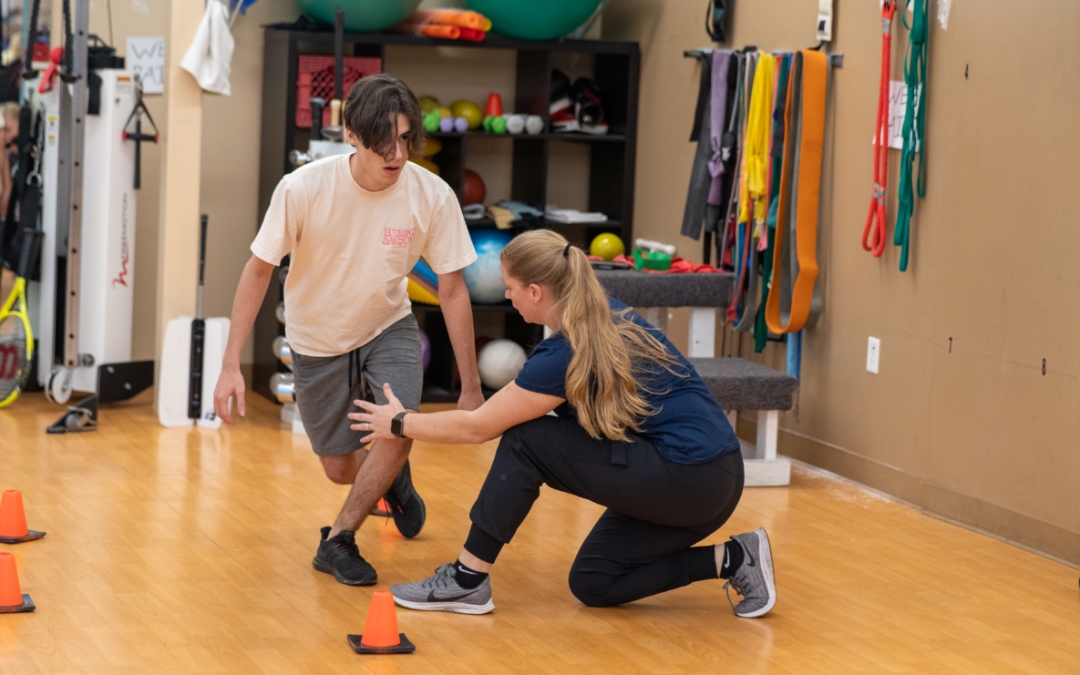There are many common injuries that athletes sustain within their career. Basketball is a fast-paced game consisting of cutting, sharp movements, sprinting and rapid stops. All of these can result in injury if proper techniques to reduce the chance of injury are not incorporated into a player’s preparation. One of the most prevalent injuries in basketball is an ACL tears.
ACLs and ACL Tears
The ACL is one of four main ligaments in the knee. It has several functions, but one of the most important is that it maintains stability of the knee especially with rotation. It is most commonly stressed in basketball with cutting and lateral motions that are required to play the game.
Many ACL injuries are actually non-contact and can be caused by lack of appropriate muscular strength and improper stability from joints above and below the knee – such as the hip and the ankle. If the body is put in a position that stresses the ACL, and the player is unable to control their body in this position to get into and out of it, then that is when an ACL injury can occur.
Increasing Stability and Decreasing Risk of Injury
While we cannot prevent every injury, we can help athletes reduce their risk with proper preparation. It is important for athletes to prepare their body for the sport they are playing in order to reduce their risk of these types of injuries.
There are many factors that play a role in keeping an athlete healthy.
Sleep, recovery, and nutrition are all vital to helping athletes perform their best and reduce the risk of injury. Along with those three, focusing on strength and stability training also plays a huge role in fortifying the body against injury. A few areas of focus would be the ankles, glutes, and core to help to meet the demands of basketball.
Here are a few examples of stability exercises you could incorporate into your program right now:
Exercises for Stability
1) ANKLE stability
Line jumps forward
Line jumps lateral
Single Leg Distance Jumps (3x 10-12 reps)
Jump for distance on one leg while landing on that same single leg.
Single leg distance jump
2) GLUTE stability
-
Banded Monster and Lateral Walks (3x 10-12 reps)
Put a band around either your knees, ankles, or both depending on the amount of resistance you need. Squat slightly and step sideways, keeping that crouched position. Take 10-12 steps in one direction and take the same amount to return. Focus on engaging your glutes the entire time.
-
Banded monster walk
Banded lateral walk
Single Leg 4-Way Reaches (3x 10-12 reps each side)
Stand on one leg, reach the other leg as far forward while balancing and bending knee. Also reach backwards, to the side, and diagonally to the other side behind you. Really focus on the stability of the standing leg while you are reaching with your leg.
Single leg 4-way reaches
3) CORE stability
-
3-Way Single Leg Overhead Medicine Ball Throws (3x 10-12 reps each side)
While standing on one leg, reach a medicine ball overhead and throw it to each side and in front of you while keeping your core tight.
-
Overhead medicine ball throws
Single Leg lateral Medicine Ball Throws to wall (3x 10-12 reps each side)
Stand on one leg with your shoulder closest to the wall. Throw a medicine ball sideways towards the wall and catch it as it comes back to you. Perform this exercise on both sides.
Lateral medicine ball throws to wall
No athlete wants to be taken off the court with an ACL injury. If you have recently been injured, schedule an appointment with a Spooner therapist. Have us on your team so we can help you get back to playing the sport you love.

